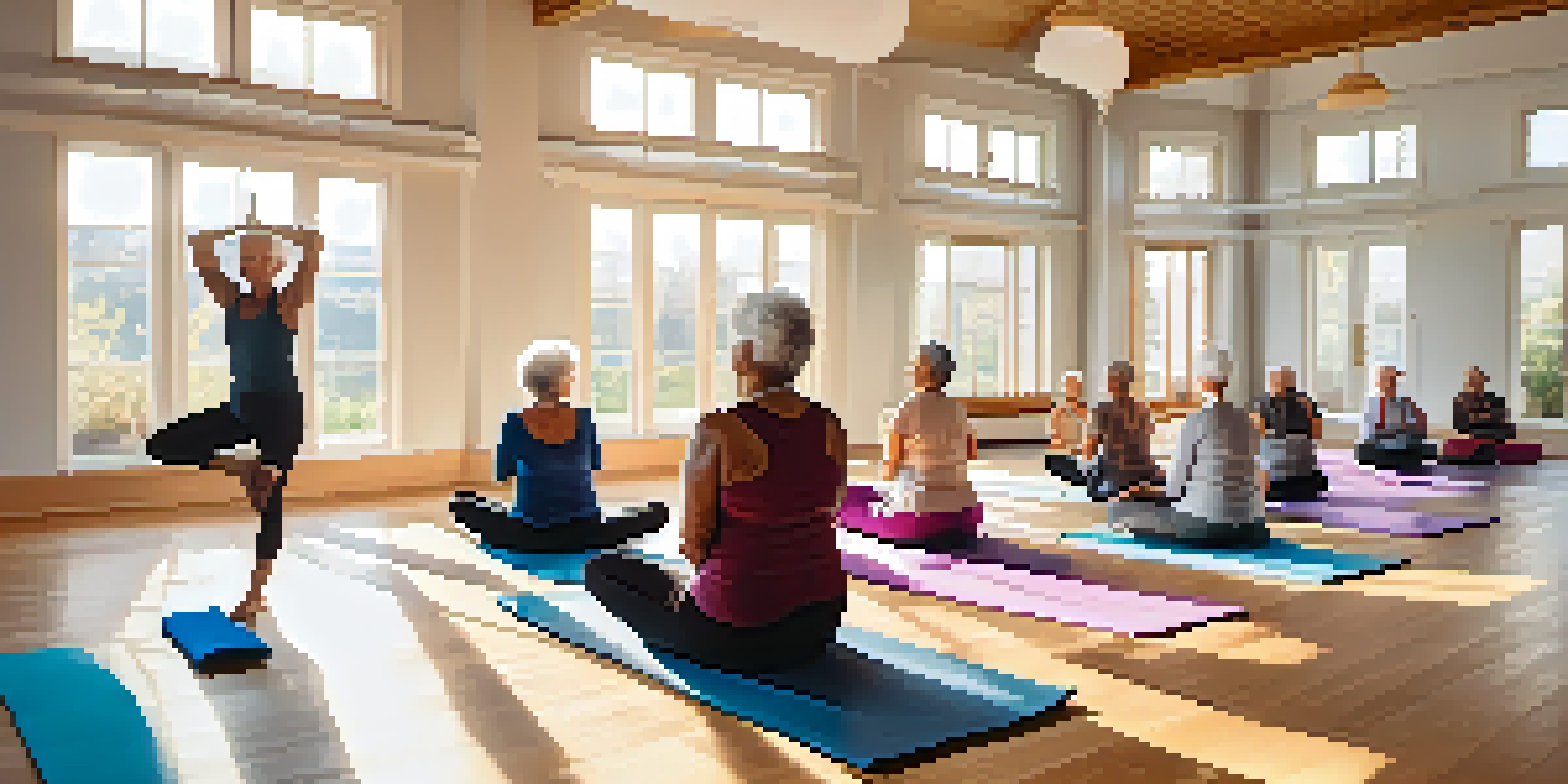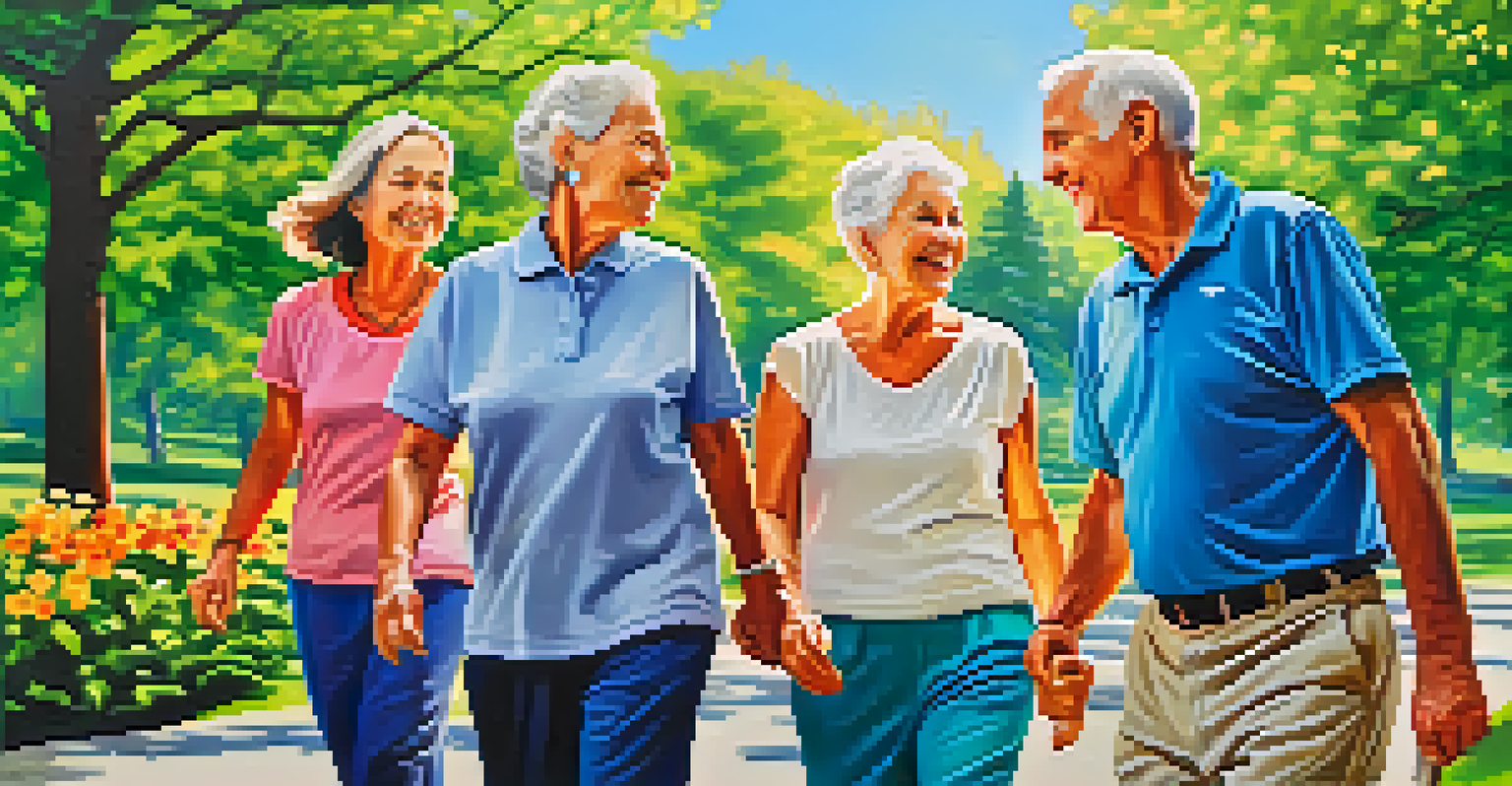Developing Personalized Fitness Plans for Seniors

Understanding the Unique Needs of Senior Fitness
As we age, our bodies undergo various changes that affect our physical capabilities. For seniors, this could mean lower muscle mass, reduced flexibility, and joint issues. Recognizing these unique needs is the first step in developing a personalized fitness plan.
The secret of change is to focus all of your energy, not on fighting the old, but on building the new.
It's crucial to understand that each senior has different health conditions, fitness levels, and goals. Some might be recovering from surgery, while others may want to maintain their independence through strength training. Tailoring fitness plans to these individual factors helps ensure safety and effectiveness.
Additionally, psychological factors, such as motivation and social engagement, play a significant role in a senior's fitness journey. Incorporating activities that they enjoy can make exercise feel less like a chore and more like an engaging part of their routine.
Setting Realistic Fitness Goals for Seniors
When developing a fitness plan, setting realistic and achievable goals is essential. For seniors, this could mean focusing on improving balance, enhancing endurance, or simply increasing daily activity levels. These goals should be specific and measurable to help track progress.

It's important to remember that progress may be slower compared to younger individuals. Celebrating small victories, like walking an extra block or lifting slightly heavier weights, can boost motivation and confidence. This approach fosters a positive mindset and encourages consistency.
Tailored Fitness Plans for Seniors
Personalized fitness plans that consider individual health conditions and preferences are essential for seniors to ensure safety and effectiveness.
Moreover, involving seniors in the goal-setting process helps them feel more empowered and invested in their fitness journey. It encourages a sense of ownership, making them more likely to stick to their plans and achieve their desired outcomes.
Choosing the Right Types of Exercises for Seniors
Selecting appropriate exercises is crucial when creating a fitness plan for seniors. Activities should include a mix of strength training, cardiovascular exercises, flexibility, and balance work to promote overall health. For example, resistance bands and light weights can help build strength, while walking or swimming can enhance cardiovascular fitness.
It is never too late to be what you might have been.
Flexibility exercises, like stretching or yoga, are equally important, as they improve mobility and reduce the risk of injury. Balance exercises, such as tai chi, can significantly lower the chances of falls, which is a common concern among seniors. Each component plays a vital role in creating a well-rounded fitness plan.
Ultimately, the goal is to create a balanced routine that seniors can enjoy and feel comfortable with. By offering variety and adapting activities to their interests, you can help them stay engaged and motivated in their fitness journey.
Incorporating Safety Measures into Fitness Plans
Safety is paramount when developing fitness plans for seniors. Start by assessing their current health status, including any existing medical conditions or medications that may affect their exercise ability. Consulting with a healthcare provider or fitness professional can ensure that the plan is safe and appropriate.
It's also essential to encourage seniors to listen to their bodies. If an exercise causes pain or discomfort, it's important to modify or replace it with a safer alternative. Creating an environment that promotes safety, such as using non-slip mats or conducting exercises in a well-lit area, can further reduce the risk of injuries.
Setting Realistic Fitness Goals
Establishing achievable fitness goals empowers seniors, fostering motivation and a sense of ownership in their fitness journey.
Lastly, incorporating warm-up and cool-down routines into each session can help prevent injuries and aid recovery. Simple stretches or gentle movements can prepare the body for exercise and help it transition back to rest afterward.
Monitoring Progress and Adjusting Fitness Plans
Regularly monitoring progress is key to maintaining motivation and ensuring the effectiveness of a fitness plan. Tracking improvements in strength, endurance, or flexibility can provide tangible evidence of success. This not only boosts confidence but also reinforces the importance of staying active.
As seniors progress, it's essential to adjust their fitness plans accordingly. This might involve increasing the intensity of workouts, introducing new exercises, or modifying goals based on their evolving needs. Being flexible with the plan helps maintain engagement and fosters a sense of achievement.
Additionally, open communication is vital. Encourage seniors to share their feelings about the exercises and their overall experience. Their feedback can provide valuable insights for further enhancing their fitness journey.
Encouraging Social Interaction Through Group Activities
Incorporating social elements into fitness plans can significantly enhance the experience for seniors. Group classes or exercising with friends can make workouts more enjoyable and foster a sense of community. This social interaction can also boost motivation and accountability.
Consider organizing local walking groups or group fitness classes specifically designed for seniors. These activities not only provide physical benefits but also encourage meaningful connections among participants. Sharing experiences and progress can create a supportive environment that enhances overall well-being.
Social Engagement Boosts Fitness
Incorporating social activities into fitness routines can enhance enjoyment and motivation, leading to a more fulfilling exercise experience for seniors.
Moreover, incorporating friendly competition, like step challenges, can encourage seniors to be more active while having fun. The joy of exercising with others can transform workouts into a rewarding social event.
Celebrating Achievements and Promoting Lifelong Fitness
Celebrating achievements, no matter how small, is vital in maintaining enthusiasm for fitness. Acknowledging milestones, like completing a certain number of workouts or reaching a fitness goal, can inspire seniors to continue their journey. Simple celebrations, like a certificate or a shout-out in a group class, can make a world of difference.
Additionally, promoting a mindset of lifelong fitness is essential. Encourage seniors to view physical activity as a lifelong journey rather than a temporary endeavor. This perspective helps them embrace fitness as a fundamental part of their lifestyle, ensuring they reap its benefits for years to come.

By instilling a sense of accomplishment and a commitment to ongoing fitness, seniors can enjoy improved health and quality of life well into their golden years. Ultimately, the goal is to empower them to lead active, fulfilling lives.